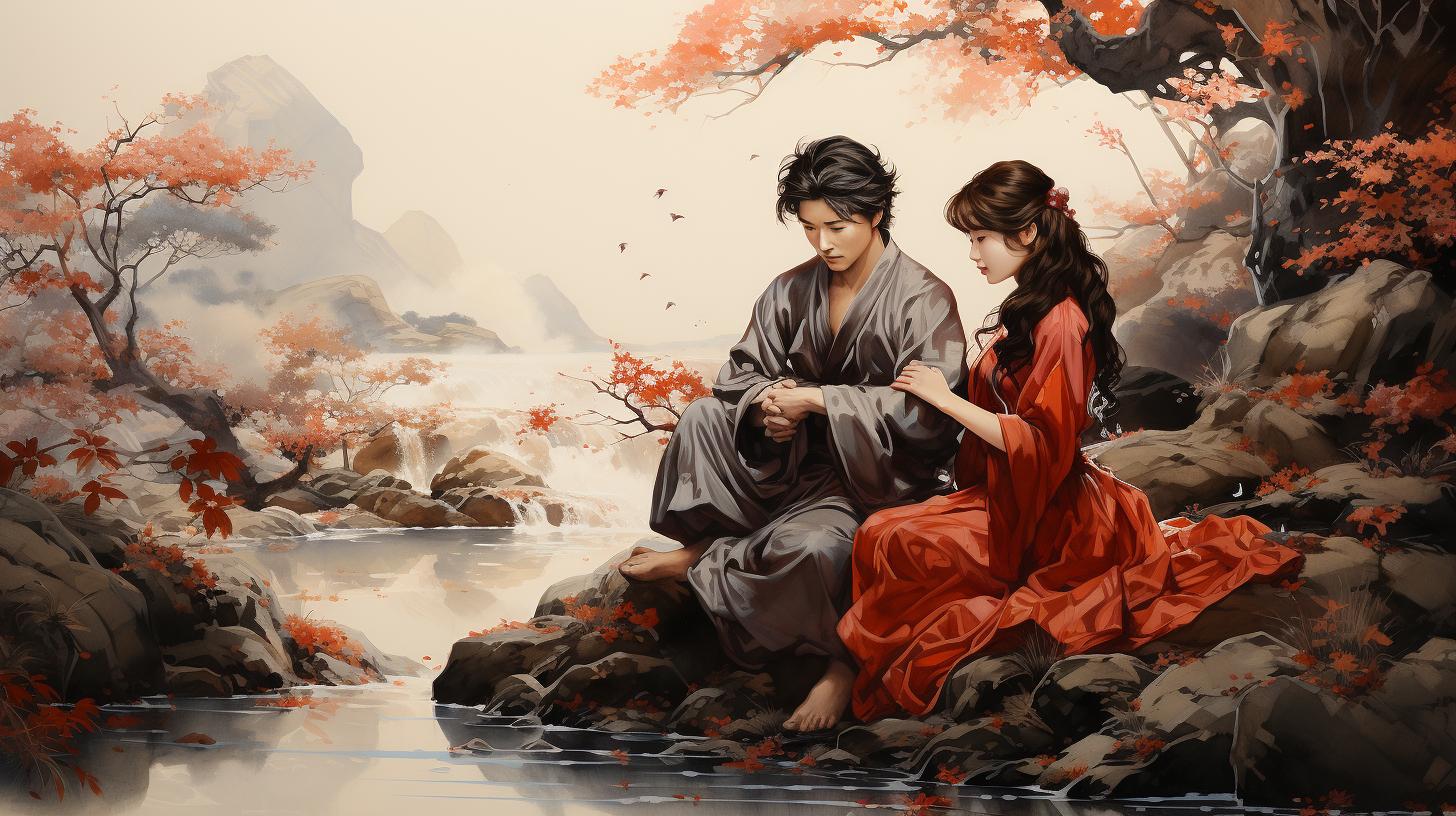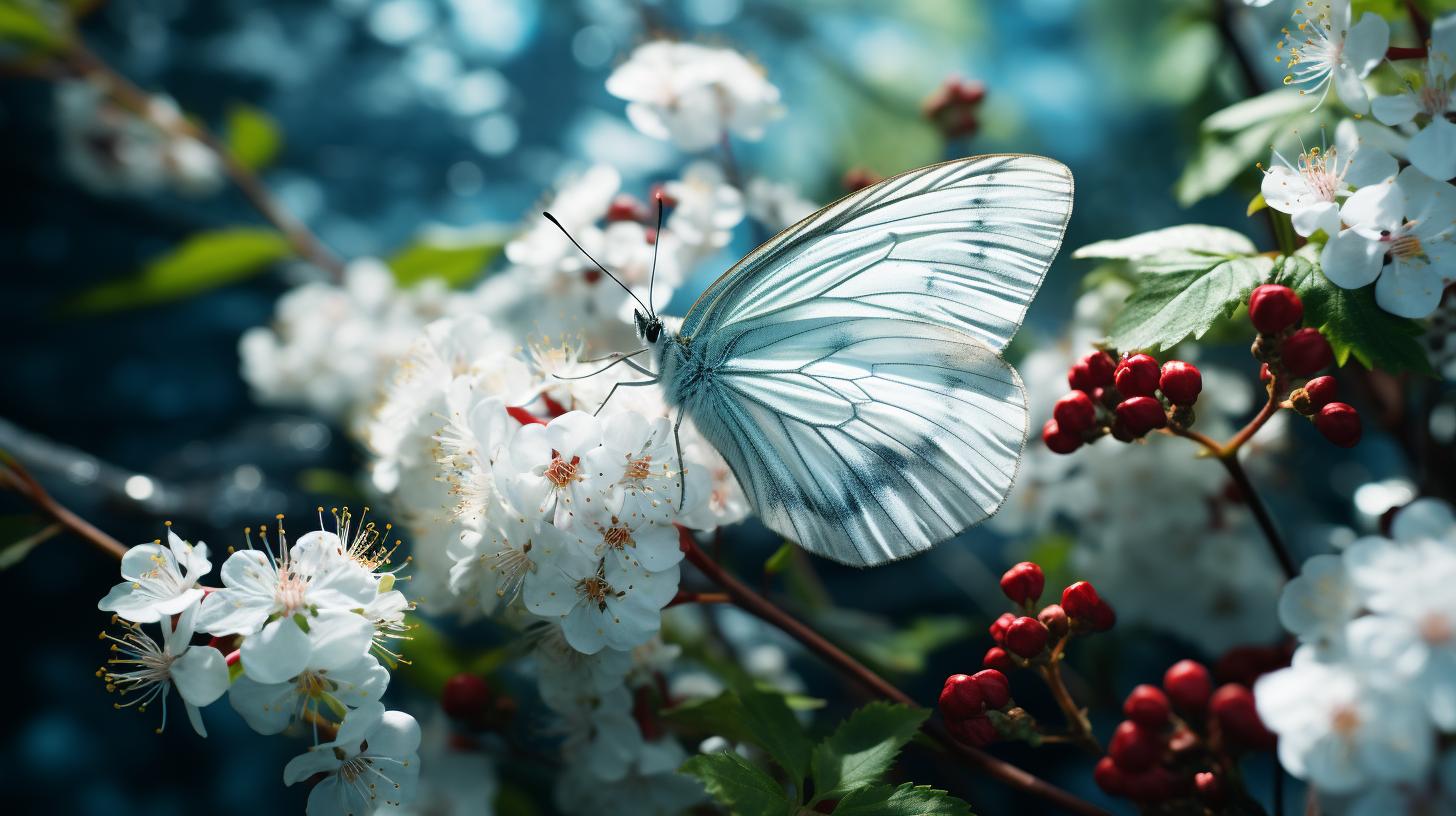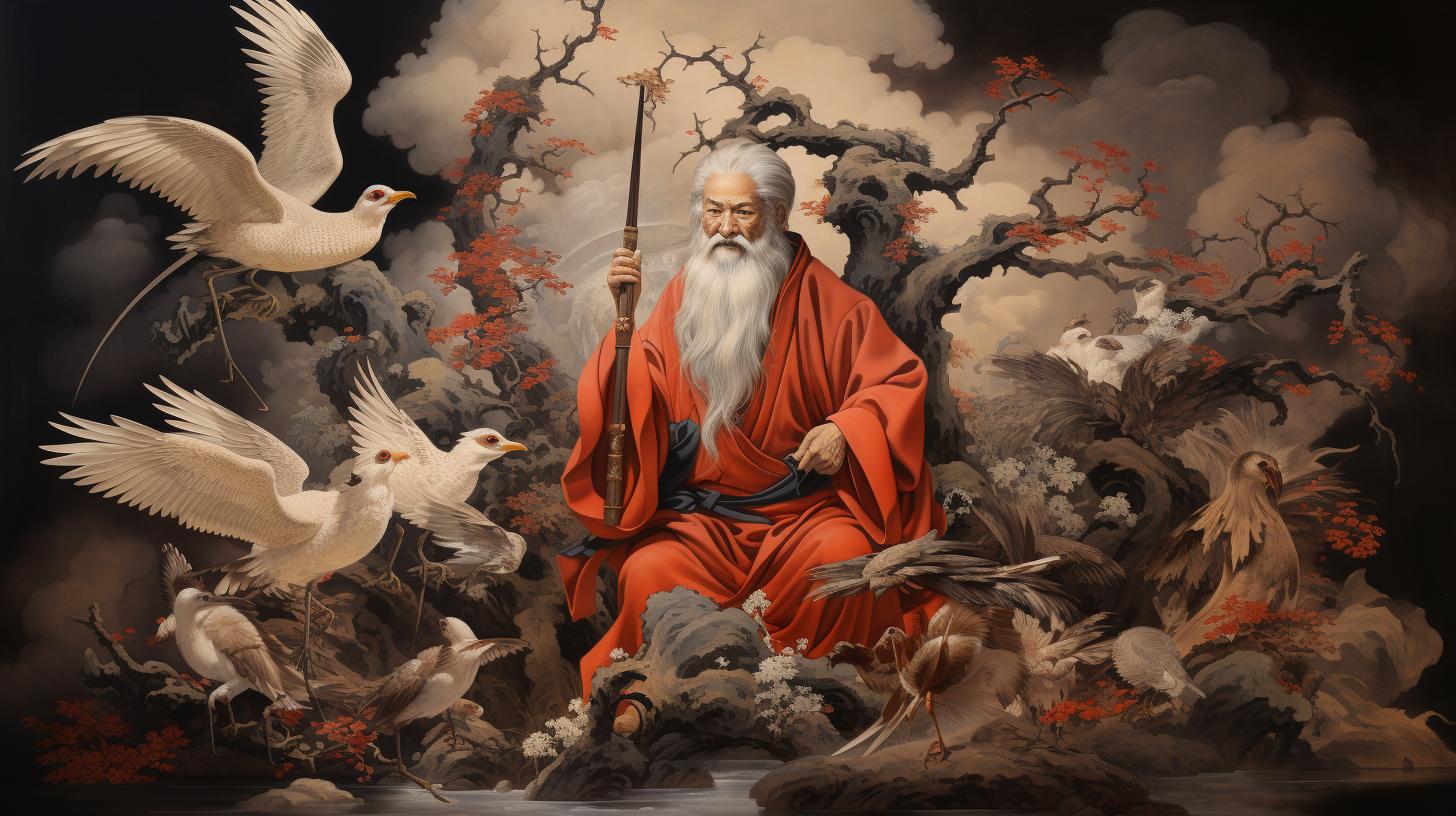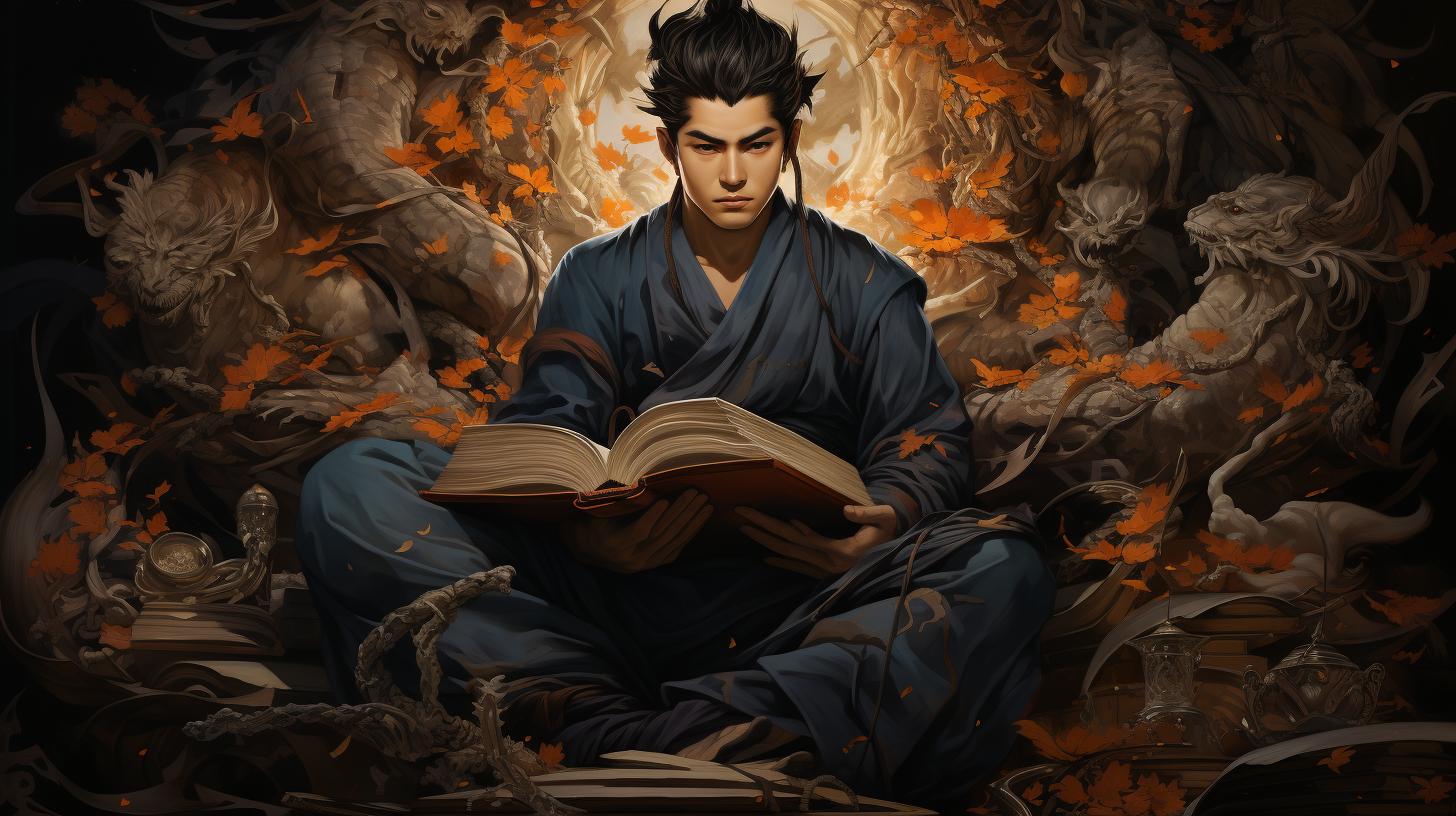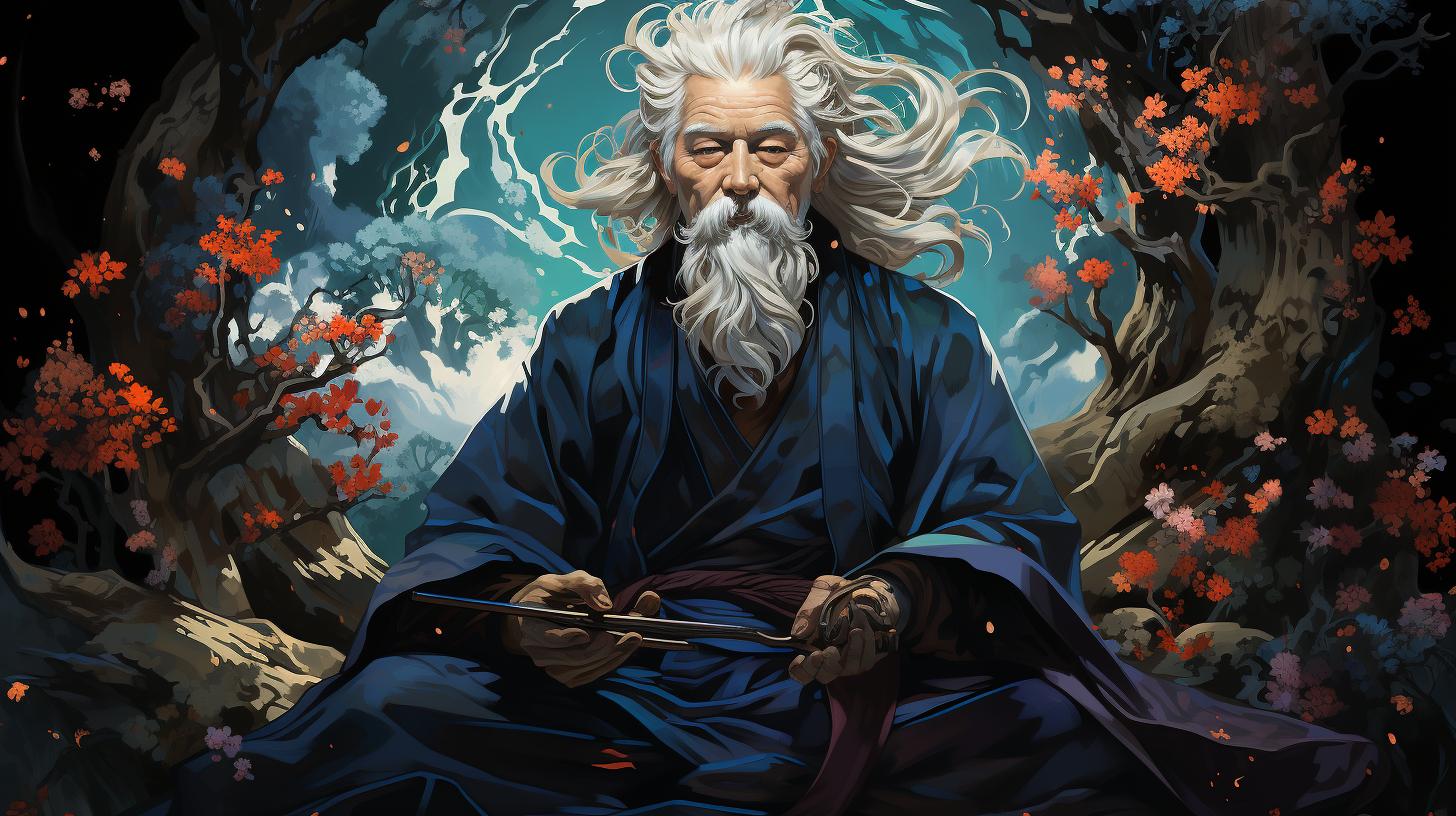Japanese Legends About Love: Mythical Tales of Destiny and Romance

Japanese legends are full of mythical tales of love, destiny, and romance. From the story of a beautiful doncella marina searching for her lost abrigo de plumas to the legend of Orihime and Hikoboshi, two star-crossed lovers reunited once a year, Japanese love stories are steeped in symbolism and magic.
These stories often reflect the Japanese theory of love, where connections are predestined and symbols like koi play significant roles in narratives about soulmates.
In this article, we’ll explore the themes that thread through these legends, how they reflect Japanese culture, and the ways in which love is celebrated in Japan.
Join us on a journey into the heart of Japanese love legends, exploring both celebrated and obscure tales that have shaped the folklore about love in Japan.
Japanese Legends About Love: Mythical Tales of Destiny and Romance
Japanese love legends are filled with magical and symbolic tales of destiny and romance.
These ancient myths reflect themes that are important in Japanese culture, such as the bonds between humans and the natural world, the role of destiny in shaping our lives, and the power of love to conquer all obstacles.
From romantic legends to complex myths about soulmates, the fabric of Japanese mythology is interwoven with narratives that explore deep emotional and spiritual connections.
In this section, we will explore some of the most captivating Japanese legends of love and what they can teach us about the human heart.
The stories range from heartwarming tales of love’s triumph to poignant myths about the struggles and sacrifices of love.
The Hare of Inaba: Saving a Life Leads to Marriage with a Princess
The Hare of Inaba is an ancient Japanese folktale that tells the story of two brothers who rescue a small, injured hare from drowning in the sea.
The hare, who is actually a deity in disguise, reveals himself to the brothers and rewards them for their kindness by promising them the hand of the beautiful princess Yakami in marriage.
Years later, the brothers travel to meet the princess and ask for her hand in marriage. Although she is initially hesitant to agree to their proposal, the brothers remind her of the promise she made when they saved the hare’s life.
This tale not only exemplifies the traditional Japanese value of kindness but also the belief in destiny and preordained connections.
Yakami agrees to marry the elder brother, and they live happily ever after.
It is said that if two lovers see a white butterfly together, it is a sign that their love will endure. This urban legend about love captures the poetic nature of Japanese romantic stories and the belief in signs that foretell love’s lasting presence.
The butterfly represents purity, transformation, and the delicate beauty of true love. One famous legend tells the story of a young man who promises to meet his lover beneath a white butterfly-shaped tree, but forgets to show up.
The girl, heartbroken, eventually turns into a white butterfly and flies away, symbolizing the ephemeral nature of some loves and the lasting impact of others.
The tale of the white butterfly reminds us that love requires attention and commitment, and that it is important to cherish those we care for.
The Love Story of the Tree and the Beautiful Girl is a magical tale that explores the connection between humans and nature. It tells the story of a giant tree that falls in love with a young girl, who in turn is entranced by the tree’s beauty and majesty.
This enchanting narrative weaves together elements of Japanese myths about love, celebrating the deep bonds that grow between the natural world and humanity.
To be with the girl, the tree transforms into a human form, but their love is not to last.
The story elegantly captures the transient nature of life and love, echoing the poignant themes found in many Japanese love stories, where actions and the unspoken words often convey your feelings more powerfully than the most passionate love declarations.
Indeed, in Japanese culture, expressing love, or “suki desu,” through actions can be as significant as through words.
The Love Story of the Tree and the Beautiful Girl teaches us about the transformative power of love, and how it can cause us to see the world in new and wondrous ways.
It also delves into Japanese superstitions about love, suggesting that some relationships are predestined, linked by invisible forces of nature and fate, much like the Japanese concept of the red string of fate.
It also reminds us that we are all connected, and that the natural world can be a source of great comfort and healing in times of trouble, echoing the Japanese belief in harmony between nature and humans.
The Red String of Fate: The Invisible Connection Between Two People’s Hearts
According to Japanese legend, all people are tied together by an invisible red string of fate that connects them to their soulmates. The string may stretch or tangle, but it will never break, and it is said that the two people connected by this string are destined to meet one another and fall in love.
This belief is a central theme in many Japanese love stories, where the destinies of lovers are intertwined with the spiritual and mystical.
This myth tells us that love is a powerful force that transcends distance, time, and even death.
It also implies that we each have a soulmate or kindred spirit waiting to be discovered, and that if we remain open and patient, we will eventually find them. This story embodies the Japanese kanji for love, 愛, which is one of the most common kanji symbols used to express love in Japanese writing.
Orihime and Hikoboshi are two celestial lovers in Japanese legend who cross the Milky Way once a year to be reunited on the seventh day of the seventh month, symbolizing a passionate love that defies the boundaries of time and space.
Orihime is a weaver princess and Hikoboshi is a cowherd prince, and they are separated by the Milky Way as punishment for neglecting their duties, a story that resonates with young people in Japan and all over the world.
The tale of Orihime and Hikoboshi teaches us about the fragility of love, and how it can be tested by distance and time. It also reminds us of the power of perseverance and dedication, and how true love can overcome even the greatest obstacles, offering a valuable lesson for beginners in understanding the depth of love in Japanese culture.
Japan has a long and rich history of love stories that have been passed down through generations. The tales are often centered around the idea of destiny, which plays a major role in guiding the fates of the characters involved.
These narratives, filled with romantic love and the profound symbolism of kanji characters, provide us with valuable insight into the cultural values and attitudes towards love, relationships, and destiny in Japanese culture.
Love in Japan: A Cultural Overview
Love is a universal emotion and is widely celebrated across the world. However, love in Japan has its unique cultural nuances and practices. In Japan, relationships are often seen as a partnership where couples work together to build a successful life.
Japanese people have different ways to express love, often preferring to demonstrate their feelings through actions rather than words, as seen in the celebration of Valentine’s Day in Japan, where women traditionally give chocolates to men.
PDA is not widely accepted, and traditionally, Japanese couples express their affection through small gestures and gifts. Talking about love, in Japan, it’s common to show your love through actions and thoughtful presents rather than overt public displays.
Friendship plays a significant role in finding a romantic partner in Japan. Many couples start dating after being introduced by mutual friends, often through group outings known as ‘goukon.’ Japanese couples often celebrate special milestones through romantic getaways and taking photos together in matching outfits.
Here are some ways they might express their love, including planning intricate surprises or sharing experiences that are meaningful to them both.
The Role of Destiny in Japanese Love Stories
The concept of destiny is integral to many Japanese love stories. The notion of a predetermined fate that guides the fates of the characters is viewed as a powerful force that cannot be ignored.
The English word “destiny” carries a different nuance and is often embraced in these narratives to underscore the depth of connections that transcend mere coincidence.
Many Japanese love stories follow the pattern of two destined souls being kept apart by forces beyond their control, battling against all odds to be together.
Confessing your love in such a context is seen as a courageous act of declaring one’s feelings against the backdrop of an unyielding fate.
Destiny is often linked to the importance of timing in Japanese culture.
Many believe that couples who meet at the right time and place are meant to be together. This notion has given rise to the belief that there is a time and place for everything, including love.
Expressing your love at the perfect moment can be seen as aligning with the stars, making the confession even more significant.
Japanese Legends of Forbidden Love
Japanese love stories are not always happy endings. Many myths are centered around forbidden love, a taboo topic in Japanese society. One of the most famous examples is the story of Orihime and Hikoboshi, two celestial lovers who are forbidden from meeting by the gods.
These stories often explore the theme of love through actions, as the lovers find unique ways to show their love despite the obstacles they face.
Other legends feature star-crossed lovers, doomed to be separated by class, social status, or other external factors beyond their control.
You can also use these tales as a reflection on how societal norms and expectations can impact personal relationships, encouraging lovers to express their feelings in the face of adversity.
These tales reflect the pressure and expectations placed on individuals in Japanese society to conform to specific gender roles, social expectations, and follow the rules established by authority figures, whether heavenly or mortal.
Yet, they also highlight the importance of actions and gestures in conveying the depth of one’s affection, adhering to the principle that show don’t tell is often the best way to communicate how you feel about someone.
The Japanese Concept of ‘Isshokenmei’ in Love and Relationships
The Japanese concept of ‘Isshokenmei’ can be translated roughly to ‘doing one’s best.’ It is a philosophy that emphasizes giving everything your all, even in the face of adversity. This concept applies to love and relationships, where couples are encouraged to put in their best effort to make their relationship work.
Japanese couples often prioritize their partner’s happiness over their own, putting their needs aside in favor of maintaining harmony in the relationship. They value effort and hard work as the keys to successful relationships, and this is reflected in the culture’s values of patience, respect, and self-sacrifice.
Confessing your love in such a culture means not only saying “I love you” but also demonstrating you love them through consistent, dedicated actions that affirm your commitment.
Exploring the Themes of Japanese Love Legends
Japanese love legends are fascinating tales that explore the different themes and concepts related to love and romance.
These mythical stories offer a glimpse into the complex nature of love, passion, and destiny in Japanese culture, often involving characters who are romantically involved with each other in profound ways.
In this section, we will explore the various themes that are present in the Japanese love legends, including the deep feelings for one another that these stories often evoke.
Love and Sacrifice: Tales of Selflessness in Japanese Love Myths
One of the common themes in Japanese love legends is the idea of sacrifice.
Many of these stories depict the characters making sacrifices for someone they’re romantically involved with. For instance, in the legend of Tanabata, the star-crossed lovers, Orihime and Hikoboshi, are separated by a vast river and their willingness to give up so much for one another is a testament to their love.
To be together, Orihime had to sacrifice her skills as a weaver, while Hikoboshi had to give up his duties as a cowherd. Similarly, in the legend of Urashima Taro, the protagonist gives up his immortality to be with his beloved.
These elements add an air of mysticism to the tales and reflect the importance of the spiritual world in Japanese culture. This supernatural aspect often highlights the unbreakable bond between those romantically involved with each other, even transcending the physical world.
One example is the story of the Yuki Onna, a beautiful woman with pale skin who torments men in the snow. Similarly, in the legend of Lady Rokujyō, a ghostly woman haunts a courtier, demanding that he remain faithful to her, which shows how the themes of loyalty and devotion are interwoven with the supernatural.
Many legends feature natural elements, such as cherry blossoms and the moon, which are symbolic of love and romance. For instance, in the story of the Peach Boy, a child is born from a peach, and when he grows up, he falls in love with a princess.
During their courtship, they gaze at the full moon and make a vow of love, using the phrase “I will always be with you” to express their eternal commitment. This moment beautifully illustrates how the natural world can be a powerful ally in expressing and nurturing your love for someone.
Similarly, in the legend of the White Snake, a white snake transforms into a beautiful woman and falls in love with a man, showing that you really can find love in the most unexpected places.
These legends reflect the importance of nature in Japanese culture and the way it is intertwined with human emotions and desires.
The Role of Women in Japanese Love Legends: Princesses, Maidens, and Goddesses
Women play a significant role in Japanese love legends, often portrayed as princesses, maidens, or goddesses.
These female characters are depicted as beautiful, virtuous, and pure, embodying the ideal of feminine grace and beauty.
For example, in the legend of the Hare of Inaba, a group of brothers save a hare and are granted a marriage with a princess, who embodies the ideal of feminine beauty and grace.
This tale is one of many japanes love stories that illustrate the theme of selflessness and destiny, similar to other japanese legends about love.
Similarly, in the legend of Izanagi and Izanami, the goddess of creation, Izanami, falls in love with the god of creation, Izanagi. These tales are part of the broader fabric of japanese mythology love stories that explore how love transcends the physical realm, touching on the concept of japanese myths about soulmates.
In conclusion,
Japanese love legends are a rich tapestry of myths and tales that offer a glimpse into the complex nature of love and romance in Japanese culture. These stories highlight the importance of selflessness, the supernatural, nature, and the role of women in romantic relationships.
Through these legends, we gain an appreciation for the beauty and depth of japanese love story narratives, which are celebrated not just in Japan, but globally.
Celebrating Love in Japan
Japan has a long history of celebrating love, and many of its festivals and traditions have become beloved events for people around the world. From romantic shrines to breathtaking destinations, Japan offers a wealth of places to celebrate love and romance, often depicted in japan love stories.
Celebrating Love in Japan: Festivals and Traditions
Japan is famous for its traditional festivals, or ‘matsuri’, which take place throughout the year. One of the most popular festivals for couples is Tanabata, which celebrates the story of the star-crossed lovers Orihime and Hikoboshi.
This festival is a quintessential example of a japan love story that has become a cultural phenomenon.
During Tanabata, couples write their wishes on colorful strips of paper and tie them to a bamboo branch, which is then displayed outside their home or at the shrine.
This act is imbued with the spirit of love myths and legends, echoing the timeless hope for a lasting bond.
Another beloved festival is Chochin Matsuri, which takes place in August and features brightly-colored paper lanterns that light up the night sky.
Couples often exchange gifts of small, decorative lanterns, which are thought to symbolize their love and commitment to each other. The lanterns are sometimes adorned with koi designs, a symbol of love and friendship in Japanese culture.
Love Shrines in Japan: Praying for Romance and Relationships
Japan is home to many shrines and temples dedicated to love and romance. One of the most famous is Kiyomizu Temple in Kyoto, which offers stunning views of the city and has a special love stone where visitors can pray for love and marriage.
The shrine’s atmosphere is steeped in the japanese legend about love, promising hope to those seeking a divine connection with their soulmates.
Another popular shrine is Hakone Shrine, which is said to be one of the most powerful places in Japan for finding romance.
Visitors can buy small ema plaques to write their prayers and wishes for love and hang them on the shrine’s special love tree. These plaques often bear the kanji for love, which is pronounced as ‘ai’, a testament to the profound connection between spiritual belief and romantic aspiration.
Japan’s Romantic Destinations: Exploring the Land of Lovers
Japan is home to many romantic destinations, from the lush countryside of Hokkaido to the neon-lit streets of Tokyo. One of the most famous destinations is the city of Kyoto, which is known for its historic temples, stunning gardens, and exquisite cuisine.
Couples can take a romantic walk along the Philosopher’s Path, a tree-lined path that runs alongside a canal and is especially beautiful during cherry blossom season. Here, you might use this serene setting to confess your love to someone for the first time, surrounded by the breathtaking beauty that characterizes Japan’s romantic spirit.
Other popular destinations include the island of Okinawa, which offers gorgeous beaches and crystal-clear waters, and the hot spring town of Hakone, which is famous for its stunning views of Mount Fuji.
In these idyllic settings, you can say “I love you” in Japanese, which is pronounced “aishiteru”, and express your feelings in a way that might feel more profound and heartfelt due to the picturesque landscapes.
The Day of Love in Japan: Celebrating Valentine’s Day and White Day
Japan has its own unique way of celebrating Valentine’s Day and White Day. On February 14th, women traditionally give chocolate to the men in their lives, from their romantic partners to their coworkers and friends.
The word for love in these gestures can also mean a range of affections from platonic to deep romantic interest, depending on the context in which it’s given.
The type of chocolate given varies depending on the relationship – for romantic partners, women often give expensive, high-quality chocolate – while for coworkers and friends, they might give simpler, less costly chocolate.
Here, the one that you’re romantically interested in receives something special, a practice that helps you through the process of showcasing your deeper affections.
On White Day, which takes place on March 14th, men repay the favor by giving gifts to the women in their lives.
These gifts can range from flowers and chocolates to more elaborate items like jewelry or designer handbags. This tradition provides an opportunity for men to use the phrase “suki desu” (I like you), to show that you like the person and are interested in furthering your romantic relationship.
.

